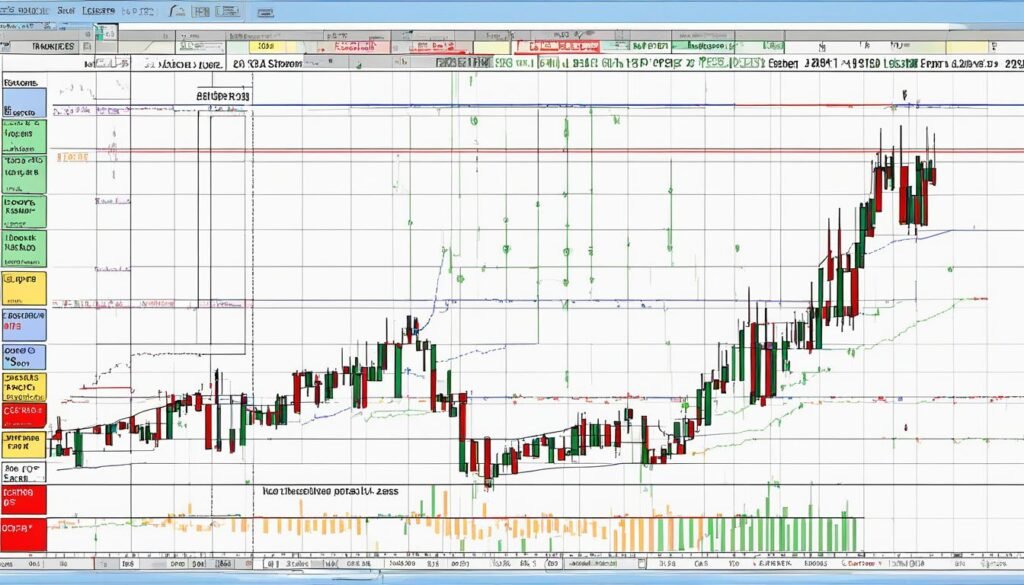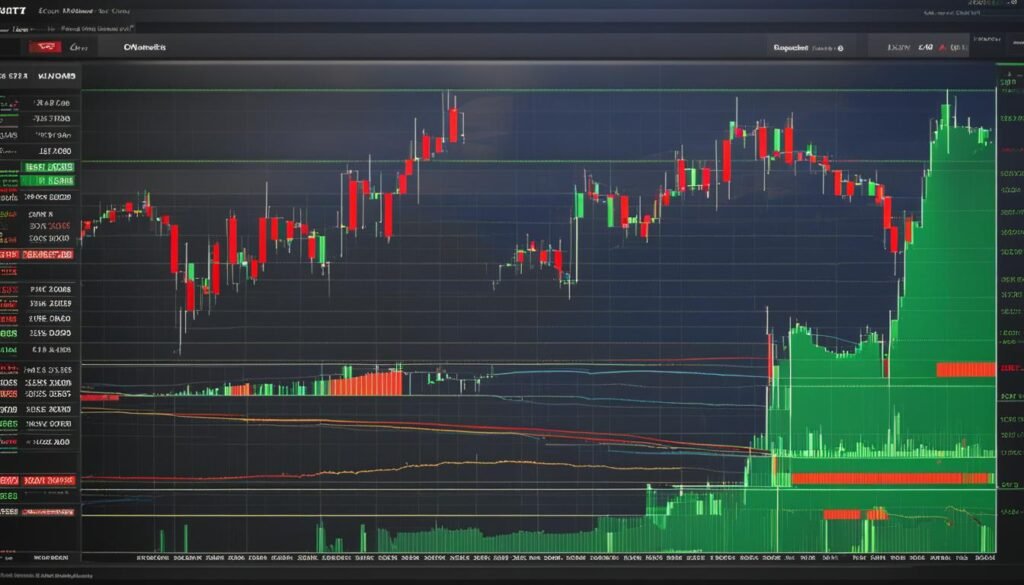Currency trading can be a lucrative investment opportunity, but it’s also one of the riskiest markets out there. As a beginner, it’s essential to understand the importance of risk management when trading in the volatile forex market. One crucial tool for protecting investments is the use of stop-loss orders.
Buy This Premium Website for Only 18999 CHF!
Acquire a high-authority website complete with content and a premium domain name.
Contact Us Today: Email: info@cleardesign.ch
A stop-loss order is a trading strategy that sets a predetermined level to automatically sell or buy an asset when it reaches a specific price. This tool can limit losses and help traders avoid emotional decision-making, which often leads to poor trading outcomes.
Unlock the Secret to Forex Success with BOB James’ Top-Performing Signals! Experience the Ease of Proven, MyFXbook-Verified Strategies and Transform Your Trading Journey Today. Don’t Miss Out on Exceptional Performance – Join Now!
In this article, we’ll discuss how stop-loss orders can help beginners manage risks in currency trading, including its benefits, how to set effective levels, and common mistakes to avoid.
Key Takeaways:
- Stop-loss orders are a crucial risk management tool for currency trading beginners.
- Setting appropriate stop-loss levels can help limit potential losses and avoid emotional decision-making.
- Different types of stop-loss orders, such as trailing or guaranteed stop-loss orders, can provide additional benefits in different situations.
- Regularly monitoring and adjusting stop-loss orders is crucial for maintaining effective risk management strategies.
- By developing a personalized risk management plan that incorporates stop-loss orders and other mitigation techniques, currency trading beginners can navigate the forex market with confidence.
Understanding Currency Trading for Beginners
The currency market, also known as the forex market, is the largest financial market in the world. In this market, currencies are traded in pairs, and the value of each currency is constantly fluctuating based on supply and demand. Understanding the basics of currency trading is crucial for beginners who want to navigate this dynamic market effectively.
One of the unique characteristics of the forex market is that it is open 24 hours a day, five days a week, allowing for continuous trading in various parts of the world. This continuous trading creates significant opportunities for profit, but also introduces risk, making risk management strategies, like stop-loss orders, essential.
Another key aspect of currency trading for beginners to understand is leverage. With leverage, traders can control large positions with a small amount of capital. While leverage can amplify profits, it can also magnify losses, highlighting the importance of proper risk management strategies.
In addition to these unique features, there are many other factors that impact the forex market, including economic news releases, geopolitical events, and interest rate changes. Staying informed and up-to-date on these factors is crucial for effective currency trading.
Beginners can start their currency trading journey by opening a demo account with a reputable broker and practicing with virtual funds. This allows them to gain practical experience and test different strategies before risking real capital.
Introduction to Stop-Loss Orders
Stop-loss orders are a crucial tool in managing risk when trading currencies. A stop-loss order is a specific type of order that investors can place with a broker, instructing them to sell a currency as soon as it reaches a specific price point. These orders are used as a risk management strategy to limit losses and protect investments in the volatile forex market.
Stop-loss orders work by limiting potential losses while allowing traders to still participate in market movements. When a currency is purchased, a stop-loss order can be set at a certain price point below the purchase price. If the market moves adversely, and the currency reaches that price point, the stop-loss order is triggered, and the currency is sold automatically.
Stop-loss orders are a critical element of trading strategies, especially for beginners. They can help traders avoid emotional decision-making and stay disciplined when navigating the unpredictable currency market. By integrating stop-loss orders into their trading strategies, traders can limit losses, guard against risk, and make more informed decisions.

Overall, stop-loss orders are an essential tool for managing risk in currency trading. By understanding how stop-loss orders work and how they can be used to manage risk, traders can protect their investments and achieve success in the dynamic forex market.
The Benefits of Using Stop-Loss Orders
Incorporating stop-loss orders into trading strategies offers several benefits, especially for currency trading beginners. These orders help minimize emotional decision-making and protect investments in the unpredictable forex market.
Here are some key advantages of using stop-loss orders:
| Benefits of Stop-Loss Orders | |
|---|---|
| Limit losses: | Stop-loss orders define a specific price point at which to sell, avoiding further loss. |
| Discipline: | Using stop-loss orders helps traders maintain their discipline and stick to their risk management plan. |
| Reduced stress: | Using stop-loss orders eliminates the need for constant monitoring, reducing trading stress. |
| Profit protection: | Stop-loss orders lock in profits by ensuring a trader doesn’t exit a position too early. |
When used correctly, stop-loss orders can help manage risk and improve trading outcomes.

Setting Effective Stop-Loss Levels
To effectively manage risk in currency trading, it’s crucial to set appropriate stop-loss levels. These levels determine the maximum amount of loss a trader is willing to tolerate before exiting a trade.
Here are some trading tips to help you set effective stop-loss levels:
- Consider market volatility: High volatility usually results in wider price swings, so stop-loss levels should be set further from entry points to account for potential fluctuations.
- Use support and resistance levels: Technical analysis can provide insights into key market trends and levels where prices are likely to reverse. Stop-loss levels should be set below support levels and above resistance levels to enhance risk management.
- Take into account individual risk tolerance: Each trader has a different risk tolerance level that determines how much they are comfortable losing. Stop-loss levels should be set according to individual risk appetite to ensure peace of mind during the decision-making process.
Bear in mind that setting stop-loss levels too close to the entry point may result in premature exit from a trade, while setting them too wide may expose traders to excessive risk. Finding the right balance requires careful consideration of market conditions and individual trading objectives.
To illustrate the importance of stop-loss orders in risk management, let’s take a look at the following table:

Stop-Loss Orders in Managing Risk
| Trade | Entry Price | Stop-Loss Level | Exit Price | Result |
|---|---|---|---|---|
| EUR/USD | 1.1000 | 1.0900 | 1.1200 | Profitable |
| GBP/USD | 1.2800 | 1.2700 | 1.2600 | Stopped out |
| USD/JPY | 105.00 | 104.50 | 105.50 | Profitable |
The table demonstrates how setting appropriate stop-loss levels can help manage risk and enhance profitability. In the second trade, a stop-loss order at 1.2700 would have limited the loss, whereas in the first and third trades, stop-loss orders were not triggered, resulting in profitable trades.
By using trading tips and effective stop-loss orders, novice traders can protect themselves from excessive risk and improve their chances of success in the dynamic forex market.
Types of Stop-Loss Orders

In the world of Currency trading, different types of stop-loss orders allow traders to implement a range of trading strategies that aim to minimize risk exposure. Let’s explore the three most commonly used stop-loss orders, how they work, and the situations where they can be most effective.
Standard Stop-Loss Orders
Standard stop-loss orders are the most common type of stop-loss order and are used by traders to close a position at a specific price level. When a currency reaches a predetermined price, the stop-loss order is triggered, effectively closing the trade and protecting the trader’s capital from additional losses. Standard stop-loss orders are typically used to exit a trade at a fixed price point and are effective in minimizing losses when executed properly.
Trailing Stop-Loss Orders
Trailing stop-loss orders are set as a percentage of a currency’s market value or a specific number of pips away from the market price. The key feature of trailing stop-loss is it gradually moves along with the currency price movement and protects a trader by locking in potential profits as well as limiting potential losses when market prices turn against the trader. Trailing stop-loss orders are most commonly used in trending markets where prices move in a particular direction.
Guaranteed Stop-Loss Orders
Guaranteed stop-loss orders are a specialized type of stop-loss order that guarantees the execution of a trade at a specific price level, regardless of market volatility. The trade-off for this level of protection is that guaranteed stop-loss orders come with a premium cost, which is often a higher spread than standard stop-loss orders. These orders can be an excellent option for traders who want to ensure absolute protection against large market movements and unforeseen market events but come with a higher cost.
Implementing Stop-Loss Orders in Trading Strategies
Stop-loss orders are an essential tool for managing risk in forex trading, and incorporating them into trading strategies can enhance decision-making. In this section, we’ll explore some effective techniques for using stop-loss orders in conjunction with other technical analysis tools.
Combining Stop-Loss Orders with Moving Averages
One popular method for using stop-loss orders is in combination with moving averages. A moving average is a trend-following indicator that calculates an average of prices over a specified period. By overlaying stop-loss levels on a moving average chart, traders can identify trend changes and adjust their positions accordingly.

Using Stop-Loss Orders with Resistance and Support Levels
Another effective technique is to set stop-loss levels based on key support and resistance levels. Support levels are price levels where demand is strong enough to prevent the price from falling further, while resistance levels are price levels where supply is strong enough to prevent the price from rising further.
By setting stop-loss orders slightly below support levels and slightly above resistance levels, traders can minimize losses in case the price breaks through these levels. Additionally, traders can adjust their stop-loss levels as the price approaches these key levels to capture potential profits.
Combining Stop-Loss Orders with Candlestick Patterns
Candlestick patterns are technical indicators that help traders identify potential trend reversals or continuation. By overlaying stop-loss levels on candlestick charts, traders can use candlestick patterns to confirm momentum and adjust their positions based on price action.
Remember, stop-loss orders are only one tool in a trader’s arsenal. Effective risk management requires a comprehensive approach that incorporates multiple techniques and regularly adapts to market conditions.
Summary
Incorporating stop-loss orders into trading strategies is an effective method for managing risk in forex trading. By combining stop-loss orders with other technical analysis tools, such as moving averages, support and resistance levels, and candlestick patterns, traders can enhance their decision-making abilities and protect their investments.
Monitoring and Adjusting Stop-Loss Orders
Implementing stop-loss orders is only the first step in effective risk management. As market conditions can shift rapidly in the currency trading world, it’s essential to continually monitor and adjust stop-loss orders to ensure they remain relevant and effective.
One crucial best practice for monitoring stop-loss orders is to regularly review market trends and market news. This information can help inform decisions about whether to adjust stop-loss levels to better align with current market conditions and mitigate potential losses.
Another important factor to consider when monitoring stop-loss orders is individual risk tolerance. As traders gain experience and become more comfortable with the market, they may become more willing to take on higher levels of risk. In such cases, adjusting stop-loss levels accordingly can help align risk management strategies with individual trading goals.
Tip: Consider setting up automated alerts to notify you when stop-loss levels are triggered or specific market conditions are met, easing the burden of constant monitoring and allowing for more efficient risk management.
Ultimately, monitoring and adjusting stop-loss orders should be viewed as an ongoing process, with regular assessments and tweaks made to risk management strategies as needed.
“A well-placed stop-loss order can provide peace of mind and protect against potential losses in even the most volatile of markets.”
Common Mistakes to Avoid with Stop-Loss Orders
While stop-loss orders are a powerful tool for managing risk in currency trading, novice traders can sometimes make costly mistakes when using them. By understanding and avoiding these common missteps, traders can maximize the benefits of stop-loss orders and protect their investments in the volatile forex market.
1. Setting Stop-Loss Levels Too Tight or Too Loose
One of the most common mistakes in using stop-loss orders is setting them too close to or too far from the entry price. Placing stops too close can lead to frequent triggerings, resulting in losses that could have been avoided. Conversely, setting stops too far from the entry price can erode potential profits and lead to substantial losses.
2. Failing to Adjust Stop-Loss Orders as Market Conditions Change
Currency markets are constantly changing, with prices fluctuating in response to geopolitical and economic events. Traders must monitor the market closely and adjust their stop-loss orders as necessary to reflect evolving market conditions. Failure to do so can result in stop-loss triggers that are too early or too late.
3. Not Understanding the Difference Between Stop-Loss Orders and Limit Orders
Stop-loss and limit orders are two distinct types of orders with different purposes. Stop-loss orders are used to minimize losses by automatically selling positions when certain levels are breached, while limit orders are used to lock in profits by automatically selling positions when certain levels are reached. Not understanding the difference between these two types of orders can result in costly mistakes.
4. Overusing or Underusing Stop-Loss Orders
While stop-loss orders can be effective risk management tools, they should not be overused or underused. Placing too many stop-loss orders can result in whipsaw effects, triggering positions prematurely and eroding profits. Conversely, not using stop-loss orders at all can expose traders to substantial losses if market conditions turn unfavorable.
5. Allowing Emotions to Override Stop-Loss Orders
As with any trading strategy, stop-loss orders are most effective when they are implemented consistently and objectively. Novice traders may succumb to emotional biases, such as fear of missing out or fear of loss, that can lead them to override their stop-loss orders. Traders must remain disciplined and remain committed to their risk management strategies.
“Risk comes from not knowing what you’re doing.”
– Warren Buffet
Developing a Personal Risk Management Plan
As a currency trading beginner, it’s essential to develop a personalized risk management plan to navigate the dynamic forex market. A solid risk management plan incorporates several risk mitigation techniques, including stop-loss orders and other trading strategies.
One critical factor to consider when creating a risk management plan is your risk tolerance level. Every trader has a unique approach to risk, and it’s important to align your trading goals and investment strategies accordingly. By determining your risk tolerance, you can build a personalized plan that fits your comfort level and minimizes potential losses.
Another essential aspect of developing a risk management plan is selecting the right trading strategies. Your approach to trading can impact your risk exposure, and it’s important to select techniques that suit your investment goals and style. Consider exploring various trading methods, such as technical analysis, fundamental analysis, or a combination of both, to create a well-rounded strategy.
Components of a Personal Risk Management Plan
| Component | Description |
|---|---|
| Stop-Loss Orders | Implementing stop-loss orders at strategic levels can prevent significant losses. |
| Position Sizing | Calculate the appropriate position size based on your available capital and risk tolerance. |
| Trading Strategy | Develop a well-rounded trading strategy that suits your investment goals and style. |
| Risk/Reward Ratio | Consider the potential returns and risks for each trade and maintain a favorable risk/reward ratio. |
By using a combination of these risk management techniques, you can build a comprehensive plan that guides your trading decisions and safeguards your investments.
Remember, a risk management plan is not a one-time event; it’s an ongoing process that requires regular monitoring and adjustment. By continuously evaluating your plan and adapting it to market conditions, you can enhance your risk management skills and increase your chances of success in the forex market.
Enhancing Risk Management Skills for Currency Trading Beginners
As a forex trader, it’s essential to continuously enhance your risk management skills to protect your investments from potential losses. Here are some tips to help you develop your skills:
1. Continuously Learn and Stay Informed
The currency market is constantly evolving, and it’s important to stay informed of global economic developments and political events that may impact currency prices. Attend webinars, read trading blogs, and follow industry experts on social media to stay up-to-date with the latest trends and news.
2. Analyze Past Trades
Reviewing your past trades can provide valuable insights into your strengths and weaknesses as a trader. Analyzing your trading history can help you identify patterns and trends, enabling you to make more informed decisions in the future.
3. Seek Mentorship or Professional Guidance
Working with a mentor or professional trading coach can be a valuable investment in your trading career. They can provide essential guidance on developing effective trading strategies while helping you avoid common mistakes and pitfalls.
Additional Resources
Here are some additional resources to help you enhance your risk management skills:
- The Disciplined Trader by Mark Douglas is a classic book on developing a disciplined mindset for successful trading.
- Trading in the Zone by Mark Douglas is another must-read book that explores the psychology of trading and how to stay in the zone while trading.
- DailyFX is a leading resource for forex news, analysis, and educational content.
Conclusion
In conclusion, managing risk is a crucial aspect of currency trading, especially for beginners. The forex market is inherently unpredictable, and stop-loss orders provide a powerful tool to mitigate potential losses. By setting effective stop-loss levels based on market conditions and individual risk tolerance, traders can protect their investments and enhance their trading strategies.
Incorporating stop-loss orders into a personalized risk management plan is essential for currency trading beginners. This plan should align with overall trading goals and investment strategies. While stop-loss orders are not foolproof, they provide a valuable layer of protection against emotional decision-making and unexpected market fluctuations.
Enhancing risk management skills is an ongoing process that requires continuous learning and analysis of past trades. Seeking mentorship or professional guidance can also be beneficial for developing effective risk management strategies.
Overall, this beginner’s guide to stop-loss orders provides a comprehensive overview of risk management in currency trading. By implementing the strategies and tips outlined throughout this article, traders can navigate the forex market with confidence and minimize potential losses.
FAQ
What is a stop-loss order?
A stop-loss order is a risk management tool used in currency trading to automatically close a trade if the price of a currency pair reaches a predefined level. It helps limit potential losses by exiting the trade at a predetermined price point.
How does a stop-loss order work?
When a stop-loss order is placed, it remains inactive until the price of the currency pair reaches the specified level. Once triggered, the order turns into a market order and is executed at the best available price to limit the trader’s potential losses.
Why are stop-loss orders important for beginner traders?
Stop-loss orders are crucial for beginner traders as they help manage risk and protect investments in the volatile currency market. They provide an automatic exit strategy, limiting losses and preventing emotional decision-making that can lead to further losses.
How do stop-loss orders assist in risk management?
Stop-loss orders act as a safety net by setting a predetermined exit point for a trade. They assist in risk management by reducing the impact of unexpected price movements, allowing traders to control their potential losses and protect their capital.
What are the benefits of using stop-loss orders?
Using stop-loss orders offers several advantages, including minimizing emotional decision-making, protecting investments from adverse market movements, and helping beginner traders maintain discipline and consistency in their trading strategies.
How do I set effective stop-loss levels?
When setting stop-loss levels, it is important to consider factors such as market volatility, support and resistance levels, and individual risk tolerance. A well-placed stop-loss level should provide enough room for fluctuations while protecting against significant losses.
What are the different types of stop-loss orders?
There are several types of stop-loss orders, including standard stop-loss orders, trailing stop-loss orders, and guaranteed stop-loss orders. Each type has its own characteristics and is suitable for different trading scenarios.
How can I integrate stop-loss orders into my trading strategies?
Stop-loss orders can be integrated into trading strategies by incorporating them alongside other technical analysis tools, such as trend lines, support and resistance levels, or moving averages. They can help traders make informed decisions and manage risk effectively.
Should I monitor and adjust my stop-loss orders?
Yes, it is important to regularly monitor and adjust stop-loss orders as market conditions change. Traders should review their orders periodically to ensure they align with their trading goals and adjust them accordingly to protect profits or limit losses.
What are some common mistakes to avoid when using stop-loss orders?
Common mistakes to avoid include setting stop-loss levels too close to the entry price, placing stop-loss orders based on emotional reactions, and neglecting to adjust stop-loss levels as market conditions change. It is important to set realistic levels and follow a disciplined approach.
How can I develop a personal risk management plan?
Developing a personal risk management plan involves assessing your risk tolerance, setting achievable trading goals, defining your position sizing strategy, and incorporating stop-loss orders and other risk mitigation techniques that align with your trading style.
How can I enhance my risk management skills as a beginner trader?
Enhancing risk management skills involves continuous learning, analyzing past trades, keeping a trading journal, seeking mentorship or professional guidance, and staying updated with market news and developments. Practicing discipline and staying focused are also key to effective risk management.


